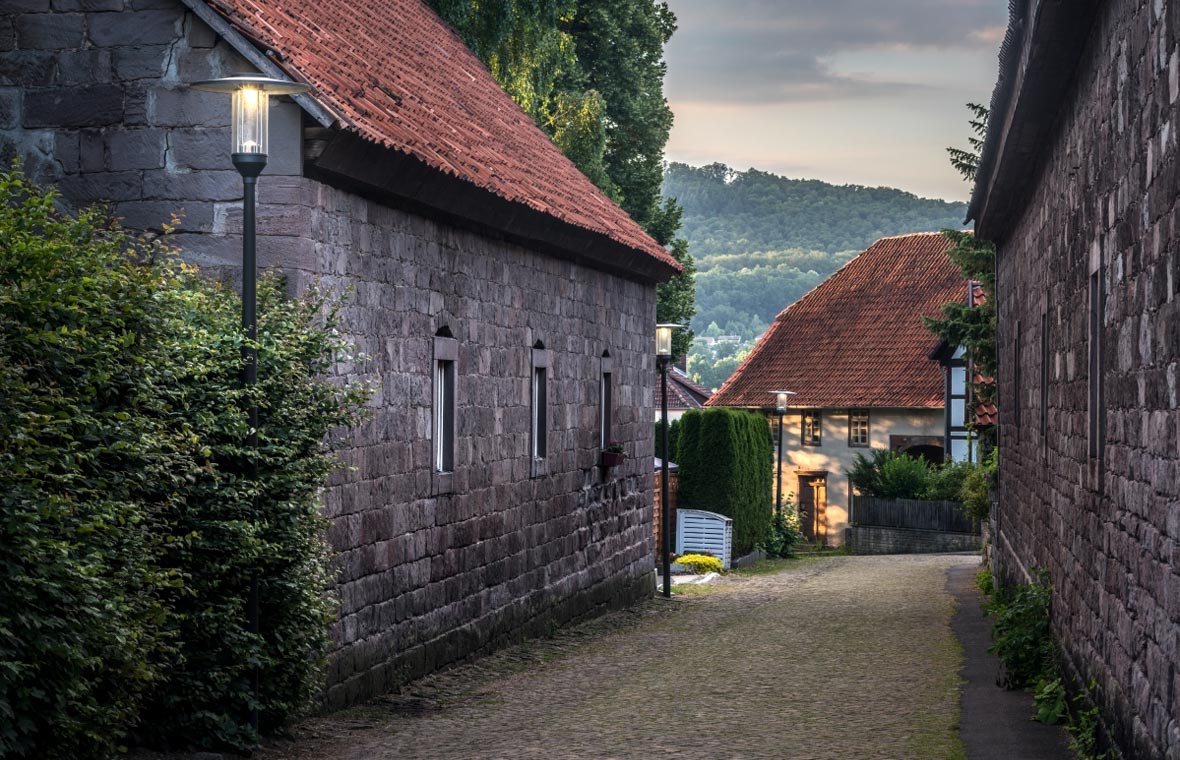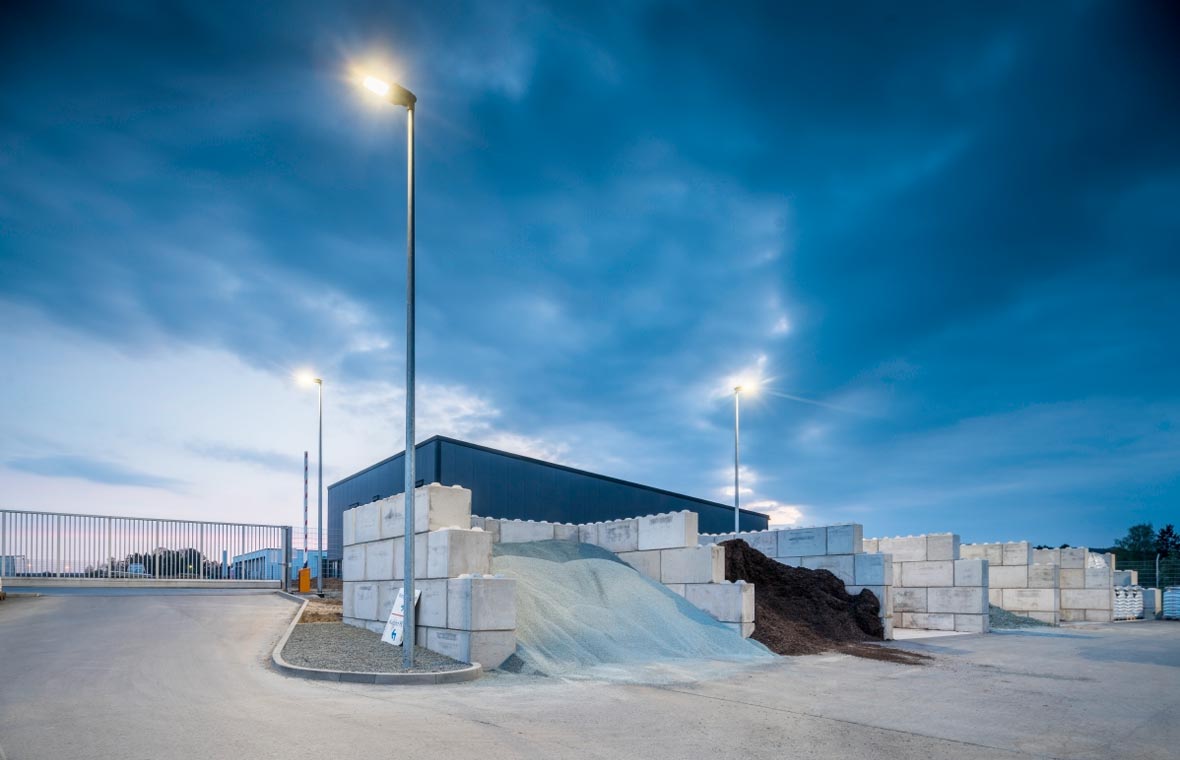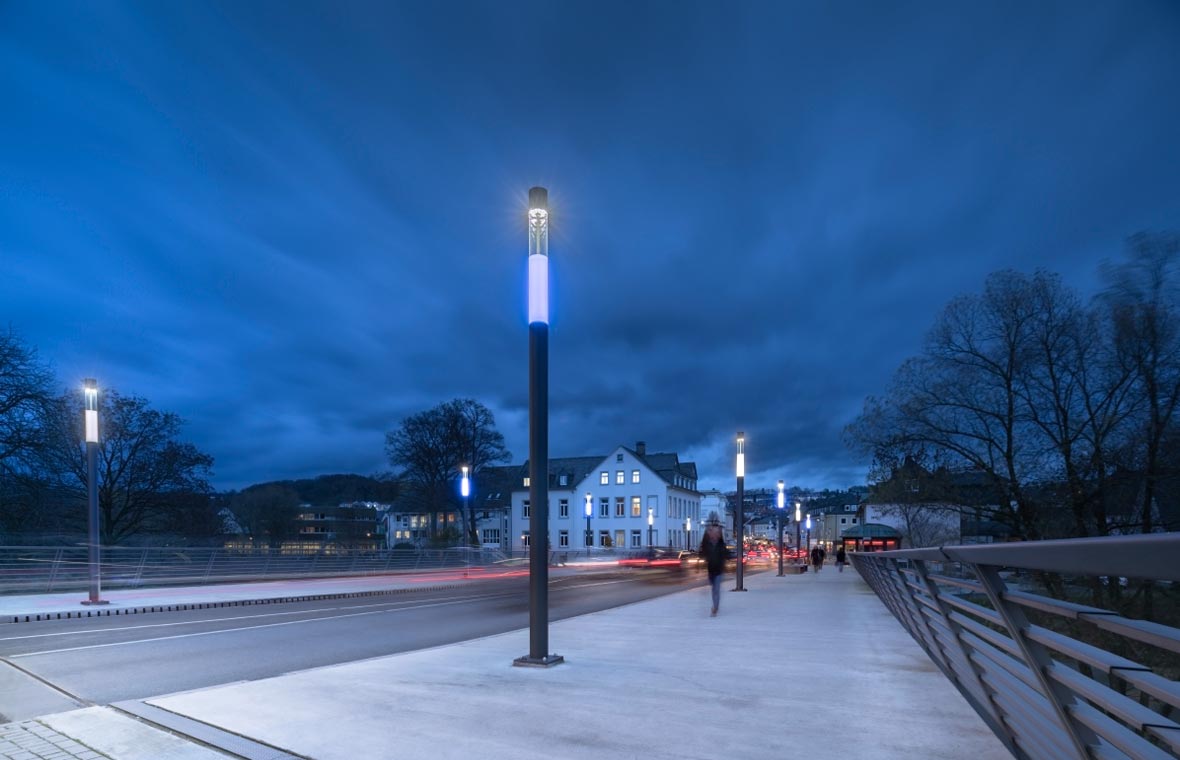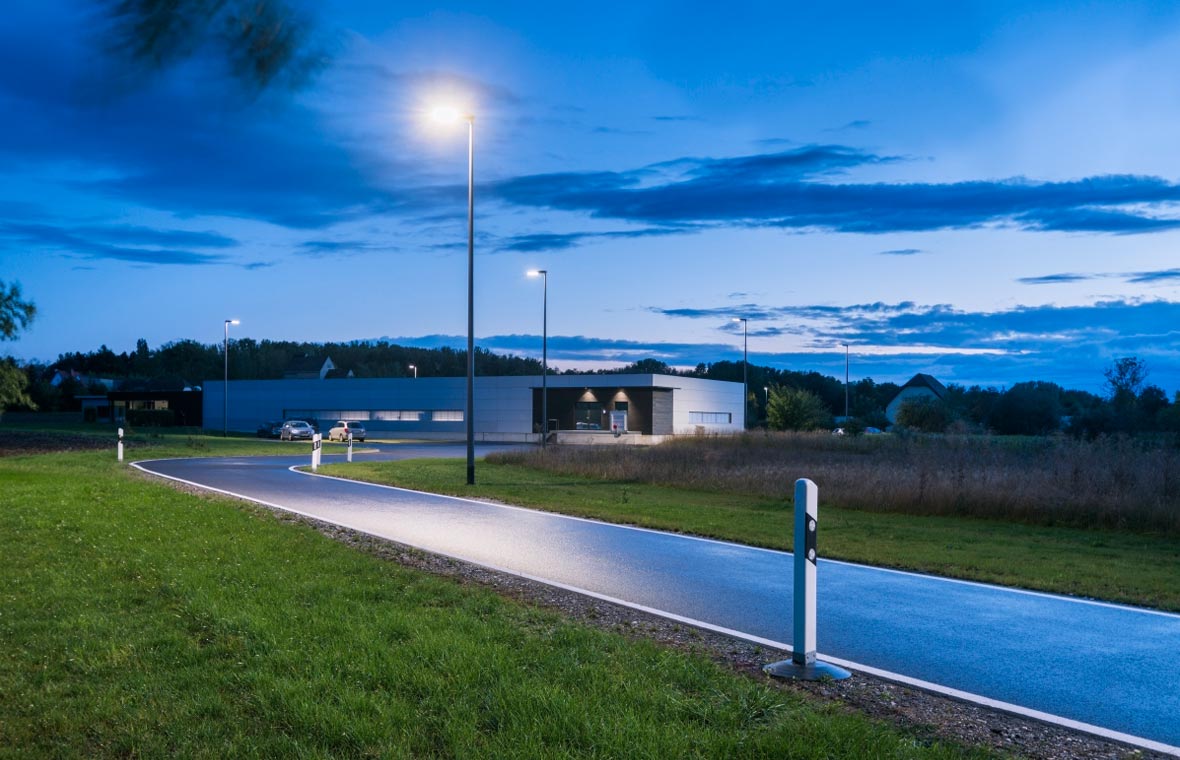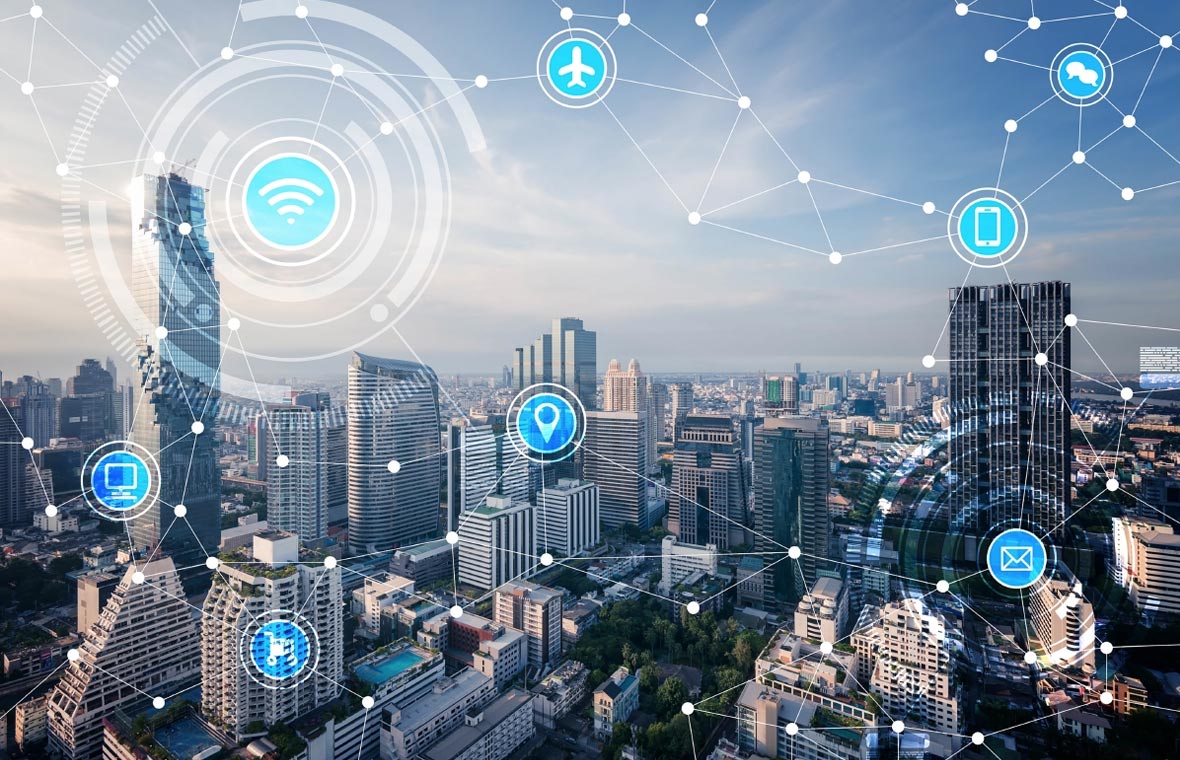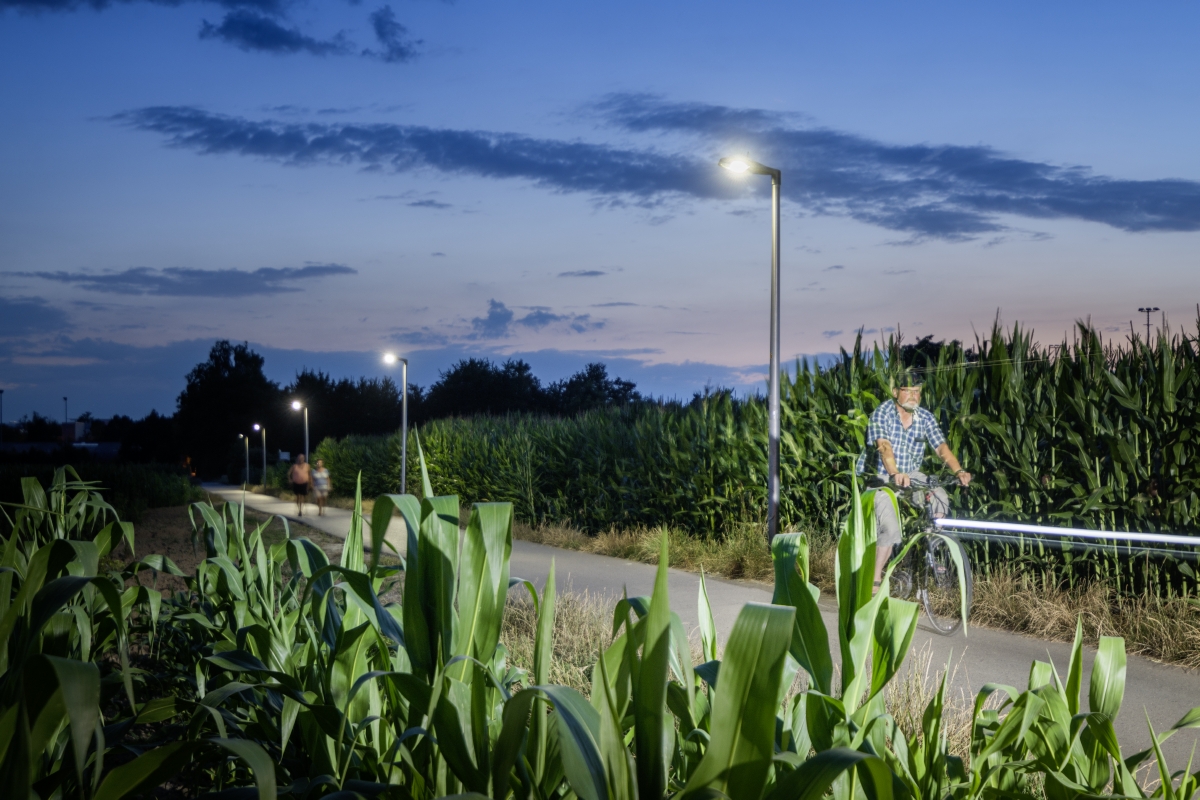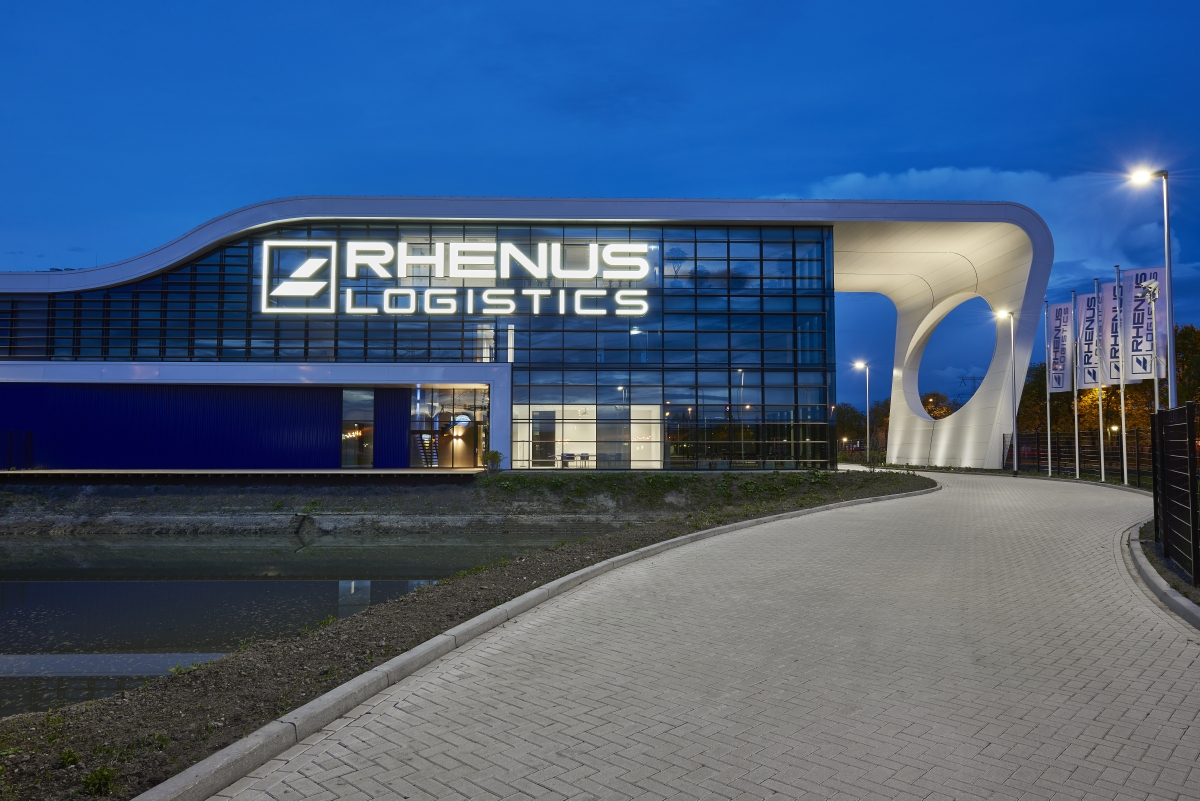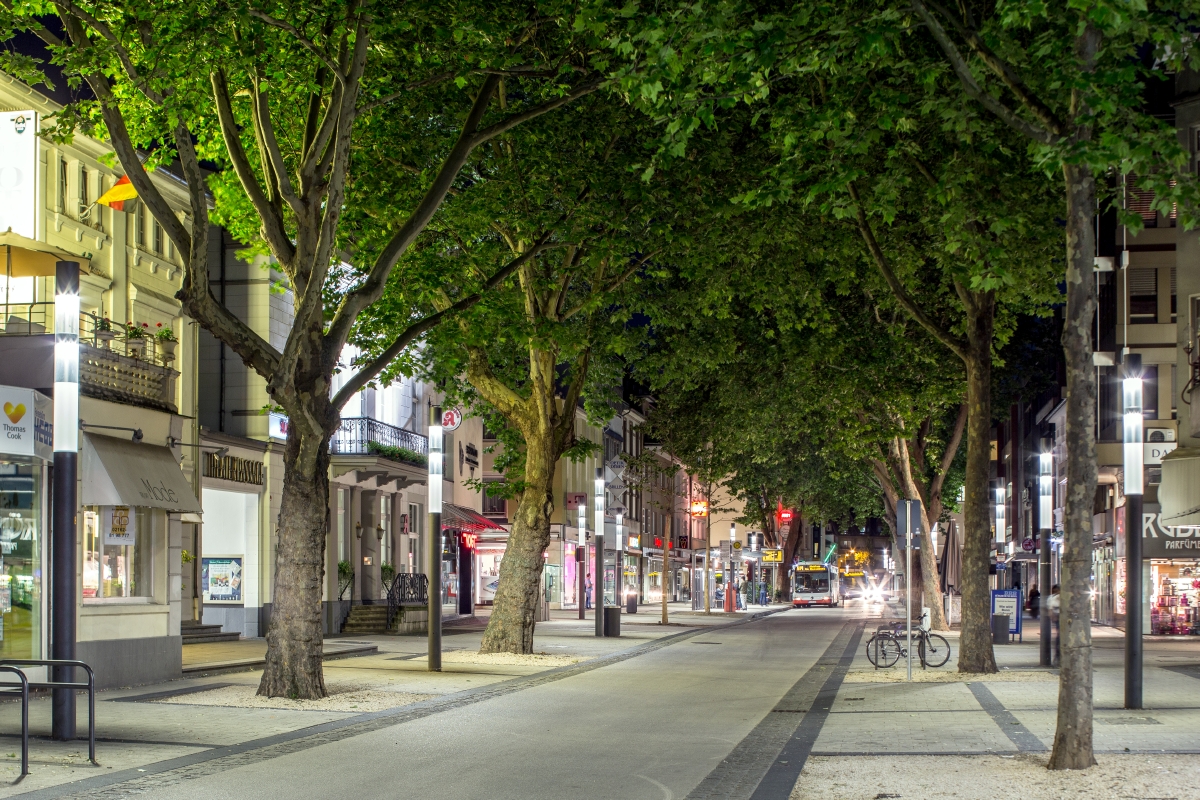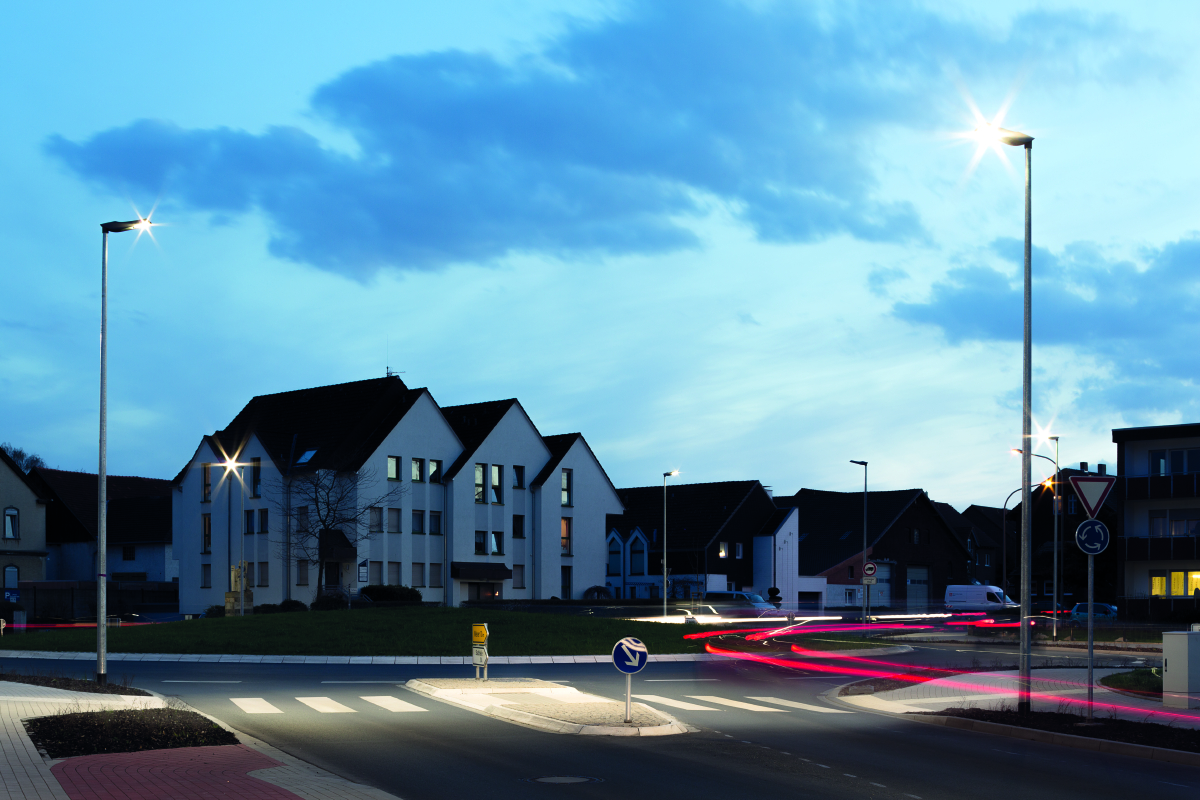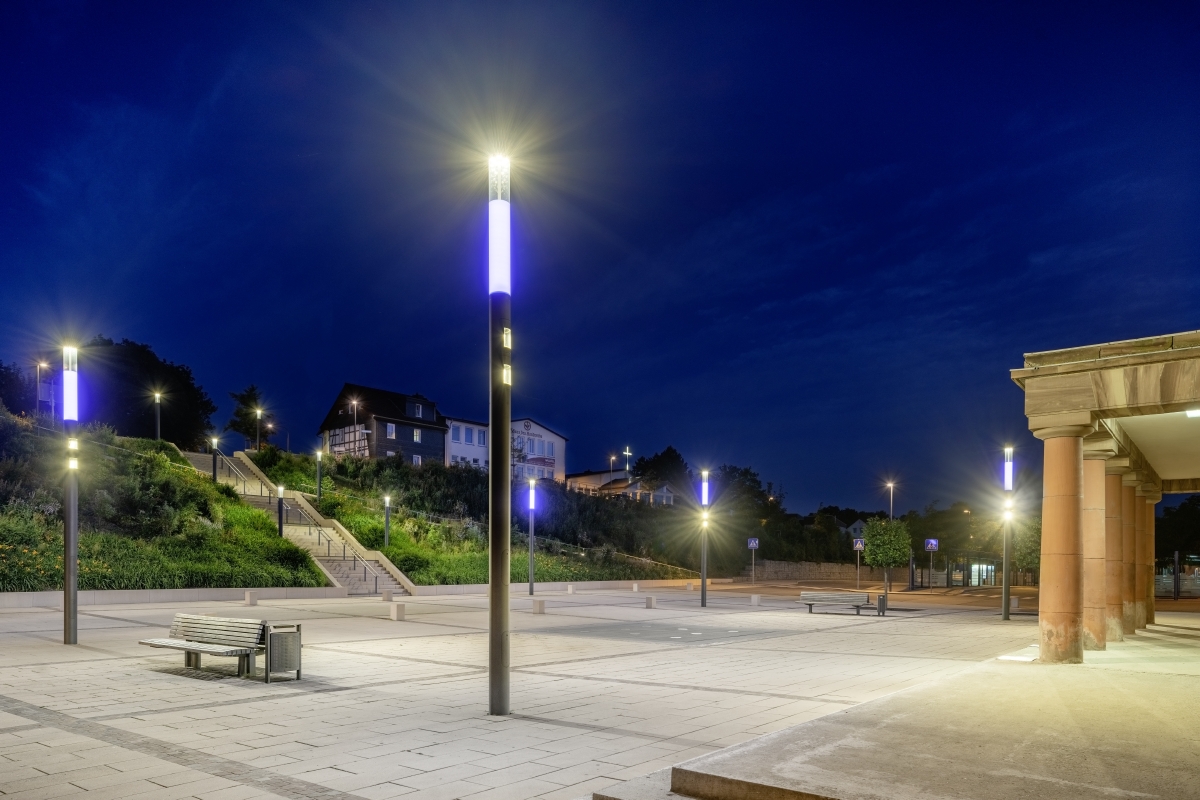LiveLink Outdoor
An intelligent network from light points
The challenge
Which system not only provides energy-saving potential via the LED technology – but also the possibilities of current and future Smart City applications?
The solution
- Interconnection of individual light points via wireless communication to form an intelligent network
- Installation without structural changes to the existing lighting infrastructure
- Configuration and control of the lighting network via web-based software with graphical user interface
- Optimisation of lighting quality, energy efficiency and flexibility through innovative control and analysis options
- Open interfaces to guarantee the future safety
Your advantages with LiveLink Outdoor
Reduce costs
Protect the climate and the environment
Ensure operational efficiency
Design the infrastructure to be future-safe
Three possible light management solutions
| Sensor single solution | Self-regulating system | Web-based system | |
| Applications | Suitable for single, independent light points |
Suitable for smaller projects Industrial facilities, parking lots and minor roads |
Suitable for large installations Locations with high volume of traffic, main roads, residential and industrial areas |
| Benefits | System-independent single solution for individual light points |
Ideal for small isolated solutions Low-cost entry-level variant Protected, individual system Ideal for pilot installations |
Ideal for large installations Protected, individual system Data in real time, statistics and analysis options Control cabinet solution can be integrated |
| Functions |
Motion detection and dimming Configuration of dimming level |
Grouping of luminaires Individual configuration of each luminaire |
Grouping of luminaires Individual configuration of each luminaire Error message notifications Configuration, control and monitoring of luminaires |
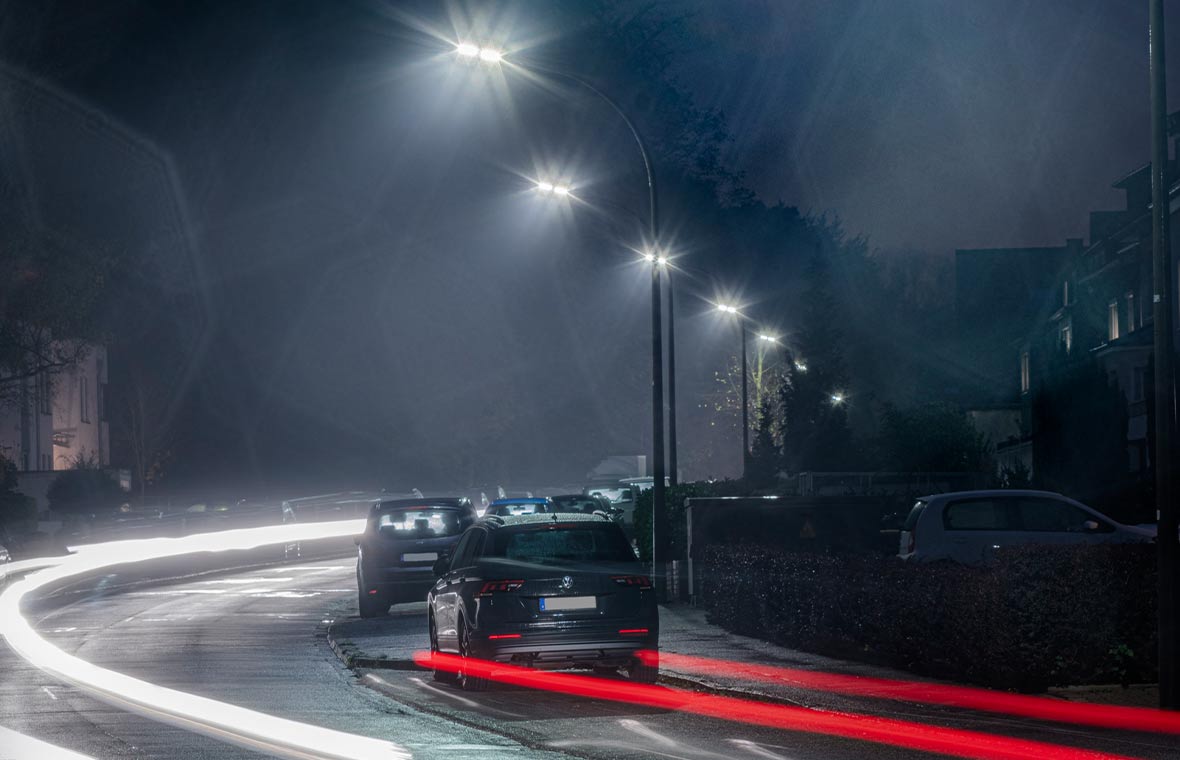

Smart and environmentally friendly through the forest
The TRILUX concept for the rapid cycle path from Stuttgart to Sindelfingen with a length of around eight kilometres finds favour: wirelessly connected smart luminaires that form a self-regulating network – and that guide cyclists safely through the forest thanks to running light.
Light management even simpler in the future
Maximum flexibility for the future: Smart Lighting Ready luminaires from TRILUX are already equipped with a single base or two combined bases standardised according to Zhaga. The Zhaga bases are located above and below the luminaire head. The luminaires can also be easily and effortlessly retrofitted later with a light management system and various sensors. Either singly or combined. This means the luminaires still offer maximum flexibility even after installation and remain state-of-the-art in the future.

